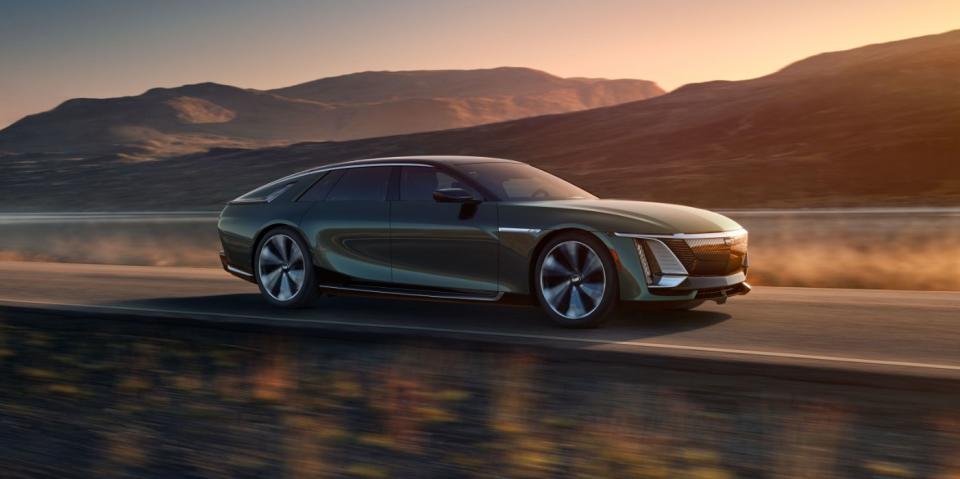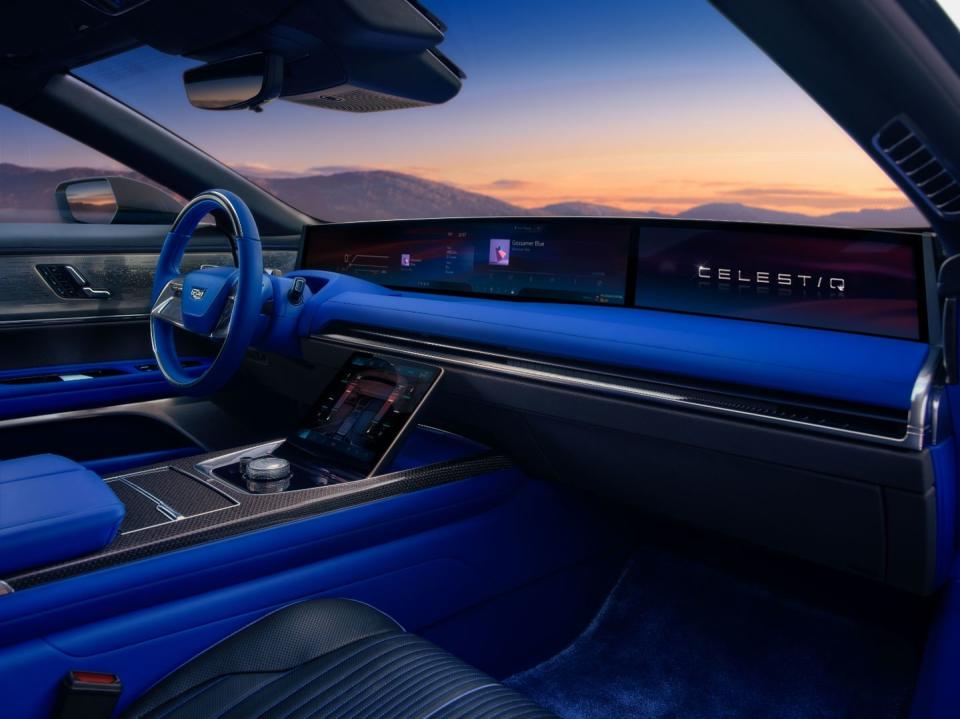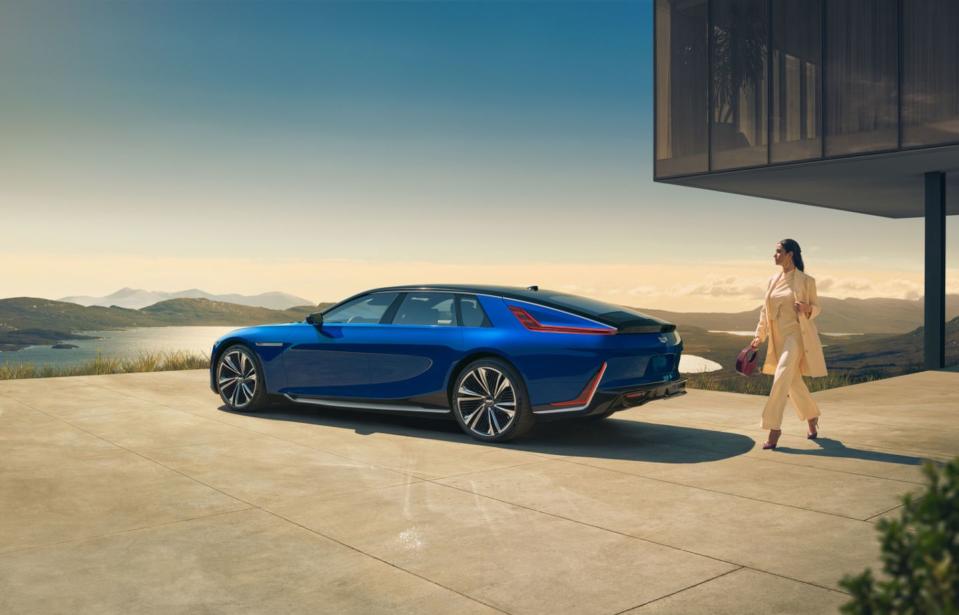GM’s Big Plan to Make a Halo Car in Very Small Numbers

Delivery of Cadillac’s hand-built ultra-luxury four-seater is set for 2024 with at least 300 miles of range, a 55-inch infotainment mega-screen, 600 hp, and a 0-60-mph sprint time estimated at 3.8 seconds.
The Celestiq’s target audience will be limited to those willing to pay at least $300,000 for a fancy car without an internal-combustion engine.
Cadillac wants to conquest super-rich customers, but has GM’s luxury brand given them a compelling reason to visit a showroom in the last 50 years?
William Durant founded General Motors in 1908 on the idea that bigger is better, and within two years he had purchased 22 companies (including Cadillac, Buick, and Oldsmobile) and came close to acquiring Henry Ford’s operations, too. The grand vision hasn’t changed much since, as GM manufactures and sells trucks and SUVs in high volume, as well as sports cars, luxury vehicles, and battery-electrics in smaller numbers—though mainstream internal-combustion sedans and compact cars have gotten the axe in recent years.
So it is with great curiosity that General Motors nudges its Cadillac brand—once the global standard of excellence but lately struggling to compete with modern luxury marques—and its groundbreaking Celestiq into the rarefied air of low-volume, spacious, ultra-luxury sedans, namely from Rolls-Royce and Bentley. Those two British brands were on life support not that long ago, but German ownership has given them the product investments necessary for revival.
How is this going to work for GM and Cadillac, which have relied for decades on modern manufacturing in large, automated factories where annual volume is counted in tens of thousands (and hundreds of thousands in the case of full-size pickups)? The Celestiq’s target audience will be limited to those willing to pay at least $300,000 for a fancy car without an internal-combustion engine.
The all-electric four-passenger Celestiq, revealed today in production form, is cut from a different template—a throwback to a time more than 100 years ago when open-air Cadillacs with wooden frames were hand-crafted by coachbuilders. For Celestiq’s launch in late 2023, GM has established a production facility at its Warren, Michigan, technical center where skilled assemblers will hand-build every model, at the pace of fewer than two cars a day.
That’s about 500 cars a year—a scale and production model that the past four generations of GM employees could scarcely comprehend.
But it’s a fully modern interpretation of Cadillac’s gloried past, as the wooden frame gives way to a metallic body-on-frame Ultium architecture that integrates a 111-kWh battery pack expected to produce 600 hp and capable of propelling this sleek, stretched sedan with an impossibly long rear overhang to 60 mph in 3.8 seconds with a two-motor all-wheel-drive powertrain, without burning a drop of gasoline.

And those old open-air Cadillacs, although revolutionary with the first electric starter in 1912, would sound like a bucket of bolts compared to the silent vault of a cabin anticipated in the Celestiq, even at high speeds.
The specs are impressive:
Range anticipated to exceed 300 miles.
200-kW DC fast charging capable of adding 78 miles of range in 10 minutes.
Anticipated 640 lb-ft of torque.
Ultra Cruise for hands-free driving beyond the capability of Super Cruise, with the ultimate vision to accommodate 95% of driving situations.
Six large “Mega Castings” used underbody and for shock towers to reduce complexity.
Carbon fiber used for front and rear quarter-panels, hood, and rails, while the doors are aluminum.
Adaptive air suspension, Magnetic Ride Control, and up to 3.5 degrees of out-of-phase active rear steering.
115 3D-printed parts, including the steering wheel and window-lift switches.
Five high-definition display screens inside.
More than 20 cameras onboard.
A 55-inch curved-display infotainment hub stretching from pillar to pillar atop the instrument panel, with Google Maps, Google Assistant, and Google Play built in.
A 1000-watt 38-speaker AKG premium audio system, plus three exterior speakers.
126 interior ambient lighting colors.
The world’s largest piece of automotive glass serving as the fixed roof, integrating suspended-particle device technology to control how much light enters the cabin.
There are 2100 LEDs inside and outside the Celestiq, many of them mounted to the perimeter of the high-tech glass roof to illuminate the pattern embedded in the multi-layer glass, with the four quadrants capable of tinting at different levels depending on passenger preference.

The car’s forward lighting signature—with its etched light-bar “grille” for flashy animated startup sequences—may appear similar to that of the more mainstream Cadillac Lyriq already in production. But this design concept was first part of the Celestiq show car that dates back about five years. The development team says the Celestiq’s forward lighting will be more sophisticated than that of the Lyriq, incorporating DMD projection and 1.3 million pixels per headlamp for a more theatrical startup animation.

 Yahoo Autos
Yahoo Autos 